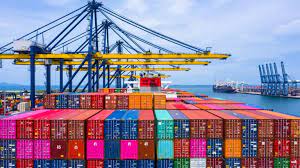
India’s ports work to keep supply chain running amidst major outbreak
MUMBAI : Indian ports are making every effort to keep the country’s supply chain intact in the face of rising COVID-19 cases, and both private and public sector terminal operators are contributing to the cause. The Indian government, which owns 12 major ports in the country, has been ensuring supply chain continuity by keeping the ports functional in the face of partial lockdowns across many states. Many of the largest private ports in the country have taken extra steps to ensure the continuous inflow of vital medical equipment and supplies.
At the port of Mundra – India’s largest container port, overtaking Mumbai’s JNPT earlier this year – operator Adani Group has prioritized oxygen shipments and worker safety.
“Oxygen is a prime requirement, and we have given priority to any ship bringing in cryogenic tanks, liquid oxygen in cylinders. The cargo is taken off and promptly transported to the required destinations with minimal loss of time,” said Sandeep Mehta, President of Business Development at Adani Ports & Special Economic Zone (APSEZ).
“We have concentrated on two things at all our ports – the safety of our staff, and the continuity of our business,” he added. “For the safety of the staff at Mundra, we are following all the necessary Covid-related protocols, including social distancing, the minimum number of staff at the operating requirements, ensuring that people work in shifts, providing sanitation, keeping key people in a special area. We had made some provision for people to stay on the premises so that their rotation can be done seamlessly.”
In addition to the effects of skyrocketing freight rates, India’s record-setting COVID outbreak has taken a toll on overall cargo volumes. Minister of State for Ports, Shipping and Waterways, Mansukh Mandaviya said, “Due to COVID-related disruptions, there was a significant fall in cargo handling at the 12 major ports . . . during the financial year ended 31 March 2021, compared to fiscal 2019-20.”
Source : The Maritime Executive
